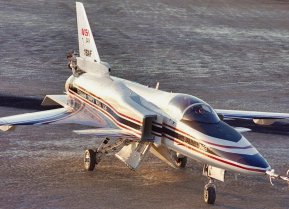H-20: China's New Stealth Bomber Could Be a Real Threat
In order to counter America’s military advantage in the Pacific, China is counting on its incoming H-20 stealth bomber.
In order to counter America’s military advantage in the Pacific, China is counting on its incoming H-20 stealth bomber.
Beijing’s subsonic airframe is currently under development and making “great progress” according to state-run news outlets.
Intended to rival the U.S. Air Force’s B-21 bomber, China plans on introducing its new airframe sometime this decade and it will represent the country’s first ever stealth bomber.
While an artist rendering of the new airframe was released earlier this year, many details surrounding the H-20 remain a mystery.
The H-20 is China’s answer to the U.S. B-2:
The PRC’s push to cement its nuclear triad in recent years has coincided with escalating tensions between Beijing and Washington.
While its land-based and sea-based systems including submarines and ICBM launchers can already deliver nuclear weapons, the development of a long-range stealth bomber will elevate Beijing’s nuclear potential.
Back in 2016, the People’s Liberation Army Air Force (PLAAF) first announced the H-20 project.
Over the last few years, various computer-generated images and renderings have surfaced. Unsurprisingly, the airframe strongly mirrors the American-made B-2 Spirit bomber.
What (little) we know about the new Chinese bomber:
For decades, Beijing has garnered a reputation for reverse-engineering and stealing foreign military products. From China’s J-10 to J-11 fighter jets, its aerial capabilities are largely derived from other countries.
When an American-made F-117 Nighthawk was shot down over the Balkans in the late 1990’s, Beijing had an opportunity to take the airframe apart in order to gain access to U.S. stealth technology and design. American officials became aware of China’s strides to acquire its own stealth bomber around this time.
In 2005, a Northrop Grumman design engineer was caught red-handed selling tech secrets to Beijing about the B-2’s engine system.
Less than one decade later, the most detailed depictions of China’s new bomber surfaced when well-known aviation expert Andreas Rupprecht published credible renderings of the prototype. The bomber essentially appeared to emulate a combination of a B-2 Spirit and a YF-23.
Regardless of how Beijing acquired the technology needed to develop its H-20 bomber, its new aerial addition is concerning. The Pentagon’s China Military Power Report detailed how China’s new long-range stealth bomber could particularly threaten the U.S a few years back.
With a reported range of more than 8,500 kilometers, this airframe could reach “beyond the second island chain.” Comparably, the B-2 has a range of roughly 6,700 miles. Officials have also expressed concern that the PLA “may also be developing a refuellable bomber that could “reach initial operating capability before the long-range bomber.” U.S. analysts also expect the H-20 to feature an active electronically scanned array (AESA) radar, which would be a step up for the PLAAF.
The U.S. is not just sitting back while China develops its new long-range bomber. Last year, the Air Force revealed its new dual-capable penetrating strike stealth fighter the B-21. More than “fifty years of advances in low-observable technology” have gone into producing the airframe as noted by U.S. Defense Secretary Lloyd Austin, making it a formidable counter-part for China’s H-20.
Additionally, the USAF’s existing fleet of B-2s have undergone extensive facelifts over the years and now retain sophisticated technology that could further threaten Beijing’s own abilities.

About the Author and Their Expertise
Maya Carlin is an analyst with the Center for Security Policy and a former Anna Sobol Levy Fellow at IDC Herzliya in Israel. She has by-lines in many publications, including The National Interest, Jerusalem Post, and Times of Israel. You can follow her on Twitter: @MayaCarlin.
Main Image Credit: Screenshot/Chinese Military. Intext Image: Shutterstock.


